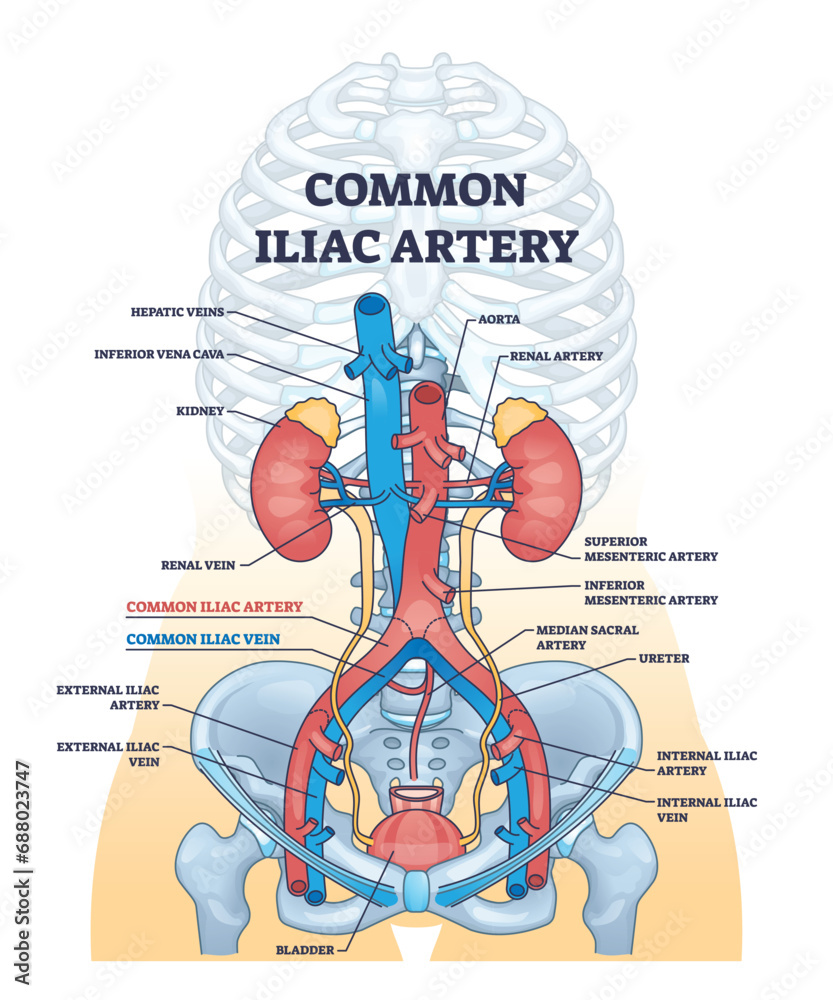Increase Blood Flow To Pelvic Region Female

For many women, the subtle symphony of blood flow to the pelvic region is often an unsung hero of overall health and well-being. This intricate network fuels everything from sexual function and fertility to bladder control and comfort. When this crucial circulation falters, the ripple effects can be profound, impacting quality of life in ways both intimate and far-reaching.
This article delves into the significance of healthy pelvic blood flow in women, exploring the factors that can impede it, the potential consequences of compromised circulation, and evidence-based strategies for enhancement. From lifestyle modifications and targeted exercises to medical interventions, we will examine the multifaceted approach to supporting this vital aspect of female health, empowering women to understand and advocate for their own well-being.
Understanding Pelvic Blood Flow
The pelvic region is richly supplied with blood vessels, responsible for delivering oxygen and nutrients to the uterus, ovaries, vagina, bladder, and surrounding tissues. Optimal blood flow ensures these organs function properly and contribute to overall health.
When circulation is compromised, these functions can be significantly affected. This can lead to a range of symptoms that affect women of all ages.
Factors Affecting Blood Flow
Several factors can contribute to reduced pelvic blood flow. These range from lifestyle choices to underlying medical conditions.
Age is a significant contributor, as blood vessels naturally lose elasticity with time, hindering efficient circulation. Sedentary lifestyles, characterized by prolonged sitting and lack of physical activity, can also impede blood flow.
Smoking is a well-known vasoconstrictor, narrowing blood vessels and diminishing circulation throughout the body, including the pelvis. Conditions like atherosclerosis, where plaque builds up inside arteries, further restrict blood flow.
Hormonal imbalances, particularly declining estrogen levels during menopause, can impact blood vessel health and reduce pelvic circulation. Finally, conditions such as pelvic inflammatory disease (PID) and endometriosis can cause inflammation and scarring, obstructing blood flow in the affected areas.
Consequences of Reduced Circulation
The consequences of impaired pelvic blood flow are diverse and can significantly impact a woman's quality of life. Sexual dysfunction is a common complaint, with reduced blood flow leading to decreased lubrication, difficulty achieving orgasm, and overall diminished sexual sensation.
Fertility can also be affected. Reduced blood supply to the uterus and ovaries can impair egg production and implantation, making conception more challenging.
Bladder problems such as urinary frequency, urgency, and incontinence can arise from weakened bladder muscles and reduced sensitivity due to poor circulation. Chronic pelvic pain is another potential consequence, often manifesting as a persistent ache or throbbing sensation in the pelvic region.
In some cases, reduced blood flow can contribute to the development of varicose veins in the pelvis, known as pelvic congestion syndrome, which can cause chronic pain and discomfort.
Strategies for Enhancement
Fortunately, there are numerous strategies women can employ to improve pelvic blood flow. Lifestyle modifications are often the first line of defense.
Regular exercise, particularly activities that engage the pelvic floor muscles, such as Kegel exercises, can significantly improve circulation. A balanced diet rich in fruits, vegetables, and whole grains supports overall vascular health.
Quitting smoking is crucial, as nicotine constricts blood vessels and impedes circulation. Maintaining a healthy weight can also alleviate pressure on blood vessels and promote efficient blood flow.
Targeted Exercises and Therapies
Specific exercises can target the pelvic floor and surrounding muscles to enhance circulation. Pelvic floor exercises (Kegels) strengthen the muscles that support the bladder, uterus, and rectum, improving blood flow to these areas.
Yoga and Pilates, with their focus on core strength and flexibility, can also promote healthy circulation in the pelvis. In some cases, physical therapy may be recommended to address specific muscle imbalances and improve pelvic floor function.
Certain therapies, such as acupuncture and massage, are believed to stimulate blood flow and reduce muscle tension in the pelvic region. However, it's essential to consult with a healthcare professional to determine the most appropriate and safe course of action.
Medical Interventions
In cases where lifestyle modifications and targeted exercises are insufficient, medical interventions may be necessary. Hormone therapy, particularly estrogen replacement therapy, can improve blood vessel health and enhance pelvic circulation in postmenopausal women.
Medications that dilate blood vessels, such as pentoxifylline, may be prescribed to improve blood flow to the pelvic region. In cases of pelvic congestion syndrome, minimally invasive procedures such as embolization can be performed to block off the affected varicose veins and alleviate pain.
Surgical interventions are rarely necessary but may be considered in severe cases of pelvic inflammatory disease or endometriosis to remove scar tissue and improve blood flow. It's imperative to discuss all treatment options with a qualified healthcare provider to determine the most appropriate approach based on individual circumstances.
The Path Forward
Optimizing pelvic blood flow is an important aspect of women's health that often goes unrecognized. By understanding the factors that can impede circulation and the strategies for enhancement, women can proactively support their well-being.
As research continues to uncover the intricate connection between pelvic blood flow and overall health, it's crucial for women to engage in open communication with their healthcare providers. This allows for personalized assessments and the development of comprehensive treatment plans.
Empowering women with knowledge and resources is essential to prioritize pelvic health and improve quality of life. By incorporating lifestyle modifications, targeted exercises, and, when necessary, medical interventions, women can unlock the benefits of healthy pelvic circulation and experience a profound improvement in their overall well-being.


















